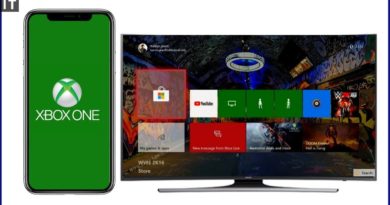15 Most Awkward Tech Fails Of All Time
Technology is supposed to make our lives easier, but what happens when it spectacularly backfires? It would be embarrassing to invest millions into a groundbreaking product, only to see it implode.
From high-tech gadgets that failed to deliver on their promises to innovations that ended up as costly disasters, the tech arena is rife with cringe-worthy moments.
People trust technology to be reliable and revolutionary, but this infamous tech fails to show how even the most promising ideas can fall apart.
It’s not just about the financial loss; it’s about the public spectacle of failure that leaves a lasting impression.
Join us as we uncover the 15 most awkward tech fails of all time. You’ll laugh, you’ll cringe, and you’ll appreciate the lessons learned from these monumental missteps. Buckle up for a wild ride through the most embarrassing moments in tech history!
1. Air Umbrella
The Air Umbrella aimed to replace traditional umbrellas by using air jets to repel rain. It seemed like a futuristic solution, but it needed the power of a leaf blower, making it impractical and noisy.
Additionally, the required battery size would make it heavy. Despite raising over $100,000 on Kickstarter, the project failed, leaving backers with nothing.
2. Laundroid
With artificial intelligence, Laundroid was built to wash, dry, and fold clothing. Even though it raised an incredible $89 million, it had trouble with basic chores like folding a T-shirt.
It may take the robot up to ten minutes to fold a single shirt because it is inefficient and slow. Hiring a maid came with a lower cost of $16,500. The enterprise ultimately failed to live up to expectations and went bankrupt.
3. Apple iPhone 4 Launch
During the iPhone 4 launch, Steve Jobs encountered connectivity issues while demonstrating the phone’s features. The Wi-Fi problems led him to awkwardly ask the audience to disconnect their devices.
Because of this unfortunate occurrence, the importance of flawless live demos for tech businesses was underscored, especially for high-stakes product launches.
4. Apple iPad Pro Ad
Apple’s 2024 iPad Pro ad is intended to highlight the device’s versatility for artists. However, the ad featured an industrial press crushing traditional artist tools, which many interpreted as Apple devaluing artistic craftsmanship.
The backlash was strong, with Apple eventually issuing a rare public apology to address the misinterpretation.
5. Microsoft Surface RT Launch
When the Surface RT tablet malfunctioned during Microsoft’s 2012 demo, the experience became a nightmare. When the tablet broke, the presenter had a hard time keeping the demo on course.
As the Surface RT struggled to acquire market acceptance, this public failure brought attention to the product’s shortcomings and caused Microsoft to suffer large financial losses.
6. Volvo XC60 Demo
Volvo’s live demo of the XC60’s automatic braking system in 2010 went disastrously wrong. Instead of showcasing the car’s safety features, the vehicle crashed during the event.
The irony was palpable, given that Volvo is known for its safety reputation. This incident became one of the most memorable tech failures in automotive history.
7. Glassdoor Privacy Breach
The anonymity that contributed to Glassdoor’s value was undermined by the company’s choice to ask users for personal information. There was much controversy about the policy change once users’ private information was revealed.
This betrayal of confidence tarnished Glassdoor’s standing and brought attention to the dangers of handling private user data.
8. Yahoo’s Missed Opportunities
Yahoo missed two chances to buy Google. The first offer was for $1 million in 1998, and the second was for $5 billion in 2002. Both times, Yahoo declined, considering the prices were too high.
These decisions proved to be monumental mistakes, as Google grew to dominate the internet, leaving Yahoo a mere fraction of its potential worth.
9. Google Glass
The future of wearable technology was presented by Google Glass. These smart glasses promised to bring augmented reality into everyday life.
However, privacy concerns and a bulky design led to public backlash. Limited functionality and a high price tag caused the product to flop, resulting in Google discontinuing it for consumers.
10. Samsung Galaxy Note 7
Samsung’s Galaxy Note 7 was anticipated to be a groundbreaking smartphone. Unfortunately, it turned out to be infamous for its exploding batteries.
Multiple reports of the phone catching fire led to a global recall. The fiasco cost Samsung billions and severely damaged its reputation for product safety.
11. Juicero
Juicero offered a high-tech juicer with a hefty price tag, claiming to deliver fresh juice with minimal effort.
However, it was discovered that the juice packs could be squeezed by hand, rendering the expensive machine unnecessary. This revelation turned Juicero into a laughingstock, leading to its quick demise.
12. Facebook’s Beacon
Online purchases made by users can be tracked and shared with friends through Facebook’s Beacon initiative. Users were outraged by the invasion of privacy and the lack of consent.
The backlash was so severe that Facebook had to shut down the program, teaching a valuable lesson in respecting user privacy.
13. Microsoft Zune
Microsoft’s Zune was created to compete with Apple’s iPod. Despite decent hardware, it failed to capture the market due to poor marketing and limited features.
Microsoft discontinued the Zune because it came to represent their incapacity to compete in the personal media player market.
14. Amazon Fire Phone
Amazon’s Fire Phone aimed to revolutionize the smartphone market with features like a 3D display and seamless shopping integration. However, it suffered from high pricing and limited app availability.
Consumers were not impressed, and the phone’s sales were dismal. Amazon quickly exited the smartphone market after this flop.
15. Nintendo Virtual Boy
One of the first virtual reality games was Nintendo’s Virtual Boy. Utilizing the console was difficult due to its red-and-black display, which gave me headaches and strain on my eyes.
Additionally, the limited game library and high price contributed to its failure. Nintendo discontinued the Virtual Boy within a year, learning valuable lessons for future VR endeavors.





